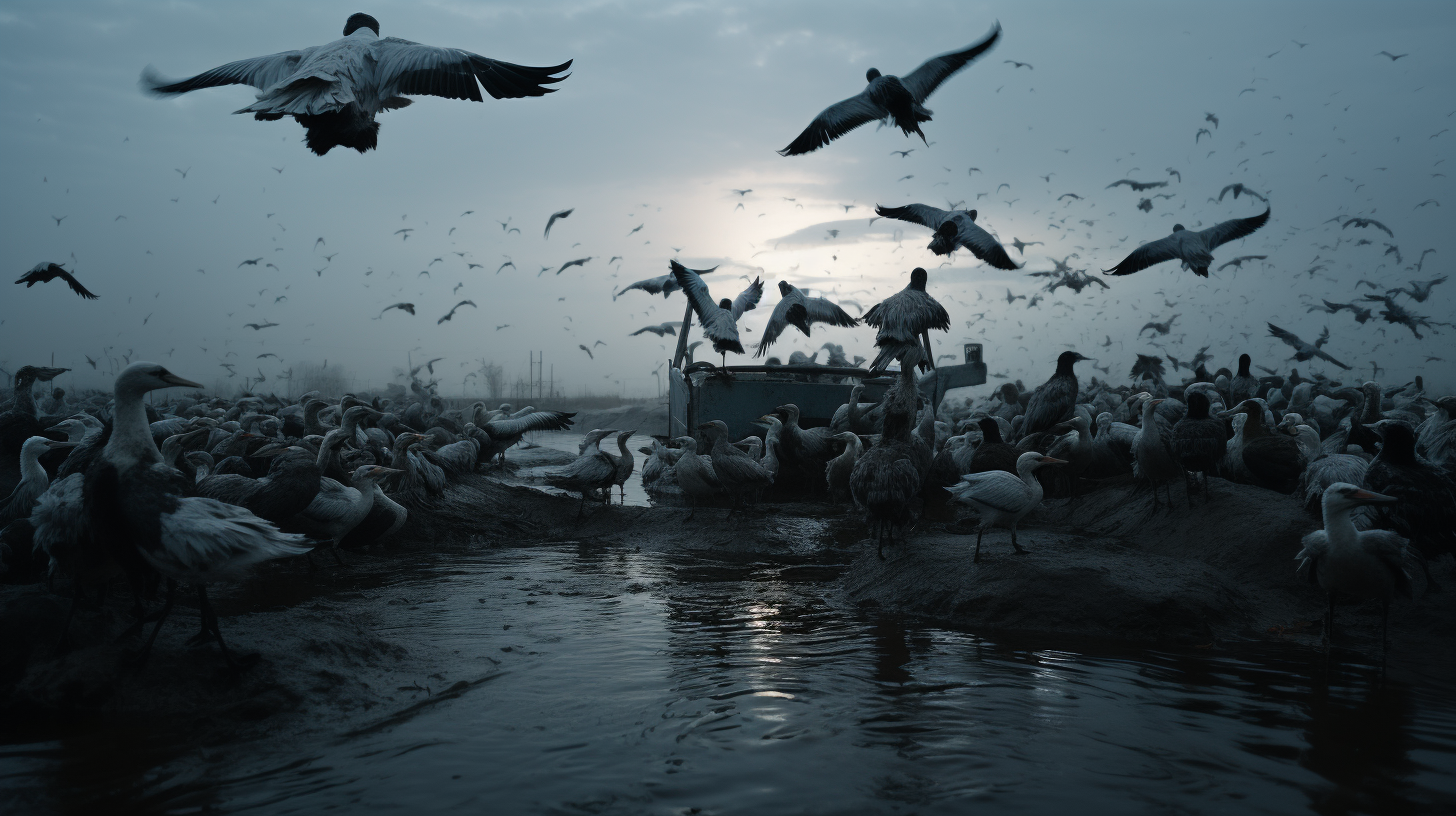In the twilight of avian epochs, our skies whisper the tales of the last migrants. Nature’s grand spectacle of winged voyage, once rhythmic and persistent, is dwindling to its final crescendo. Today, we document the last flights of migratory birds, whose patterns have been porcelain-fragile in the face of unyielding environmental aberrations.
It is with a heavy heart that we bear witness to these few resilient species—the tattered remnants of what was once a vast, interconnected network of life. Climate change, that insatiable beast, has reshaped forests, drained wetlands, and stretched deserts into impassable barriers. The grand orchestra of seasonal movement, once attuned to a delicate balance, is now erratic and perilously close to silence.
Through the lens of indomitable documentary teams braving the shifting landscapes, we capture perhaps the last coherent patterns of species such as the Arctic Tern, who once charted celestial maps over oceans and continents. We gaze in silent reverence as these feathered navigators enact their forebears’ rituals—though the world beneath them has disastrously transformed.
Researchers’ grim predictions limn our narrative, as they recount tales of species clinging to the precipice. The Blackpoll Warbler, for instance, renowned for its marathon flights, is now but a whisper among the trees. Tangled in the throes of an ever-warming planet, the birds are driven off course, their cues from nature scrambled by a climate out of control.
Our story is punctuated with the desperate chirps of hatchlings, too feeble to commence the arduous journeys of their ancestors. In these lamentations, we find not just the sorrow of an ending but a poignant reminder: we are witnessing the unravelling of complex ecological webs, threads unspooling faster than they can be rewoven by the beaks and claws of their denizens.
The Red Knot, once fervent travellers to distant shores, now face beaches desolate of the sustenance that once fuelled their voyage. We delineate the irony of their name, as knots of their habitat are untied by human hands, leaving them adrift in a sea of climatic chaos.
In stark contrast to the clamour of urbanity, the silence of the skies is deafening. Our narrative is not one of train wrecks or the cacophony of industry but of the void left by millions of wings now still. Our documentation, thus, serves as an elegy—not just for the avian kin we are losing but for the childhood joy of those enthralled by the sight of a flock arrowing northward.
The bittersweet accounts of individuals and organizations engaged in conservation efforts pepper our tale with regretful admiration. Like candlelight vigils in a hurricane, they strive to maintain sanctuaries, to chart the thermals and create corridors of hope. But theirs is a Sisyphean task in a world that has turned its back on the heralds of change.
In the end, the last flight is not a spectacle of beauty but a barometer of loss. It tells of a profound disconnect, a reflection of a species— We close our accounts knowing this narrative may soon fall silent, leaving the skies bereft of the ancient migratory ballet. It’s a quiet conclusion to a saga that was once teeming with life—a reminder for ears that will listen and hearts that still yearn for the wild symphony of nature.
